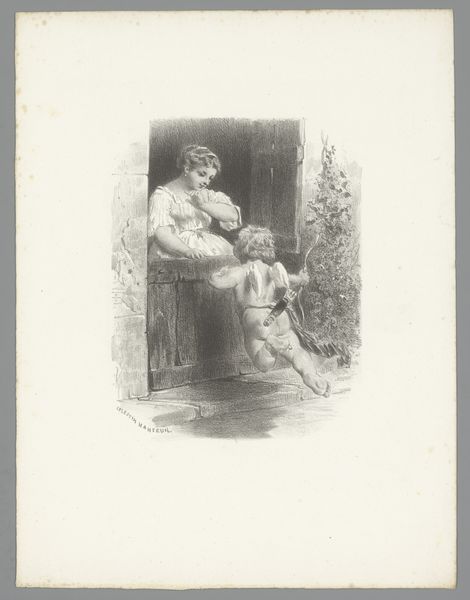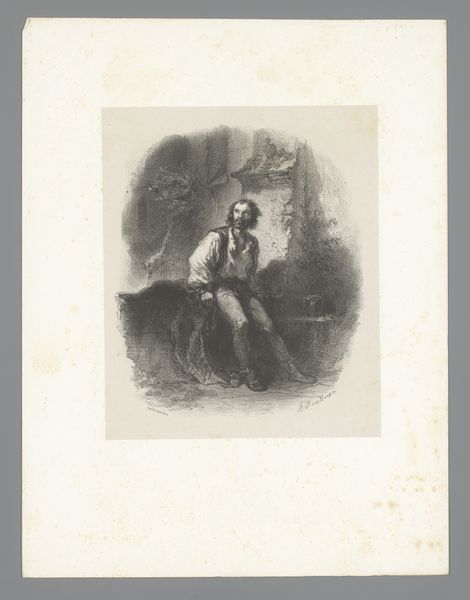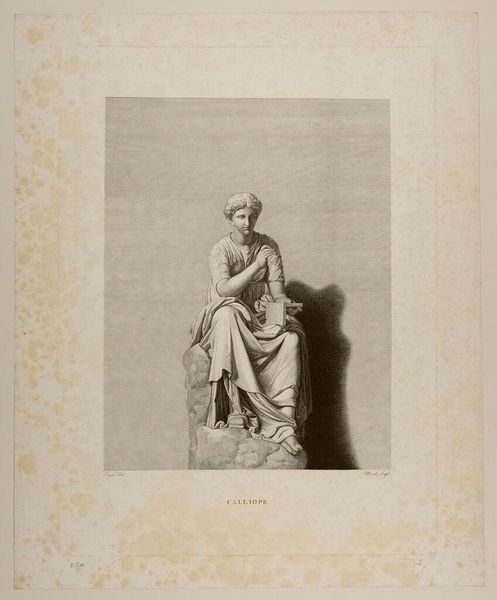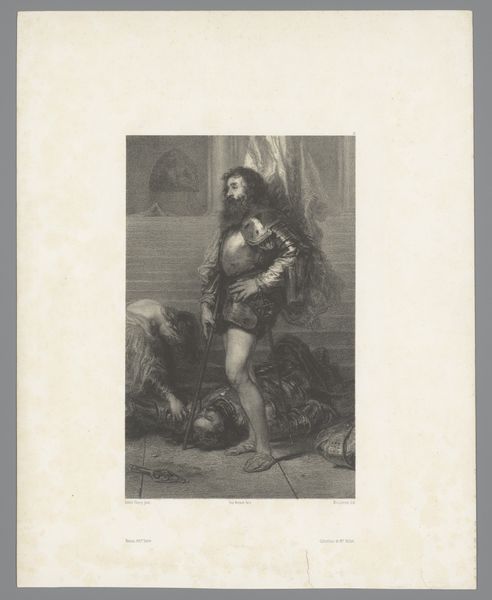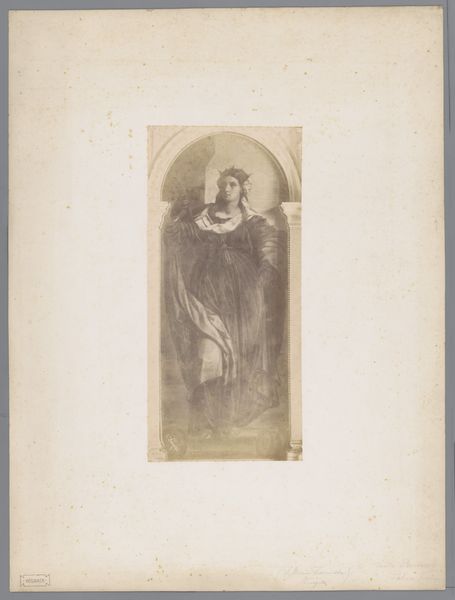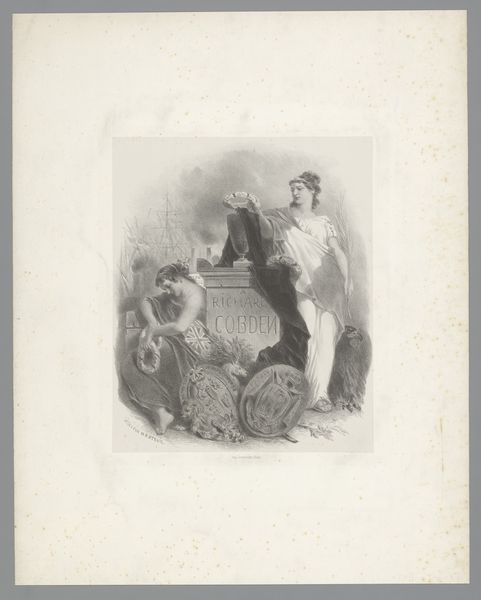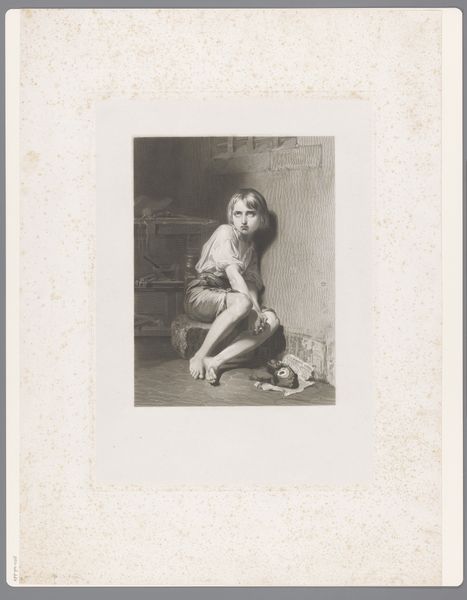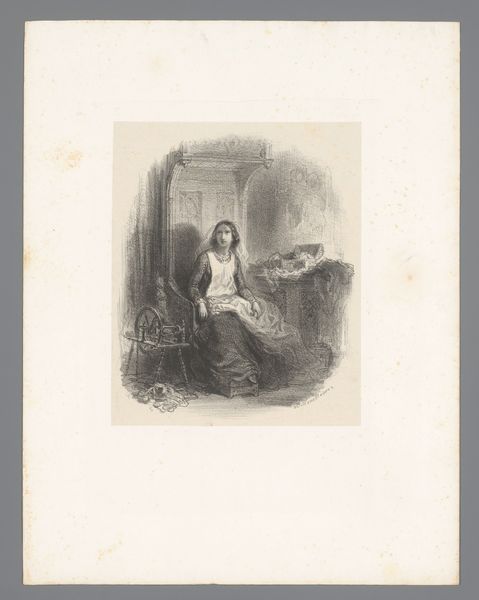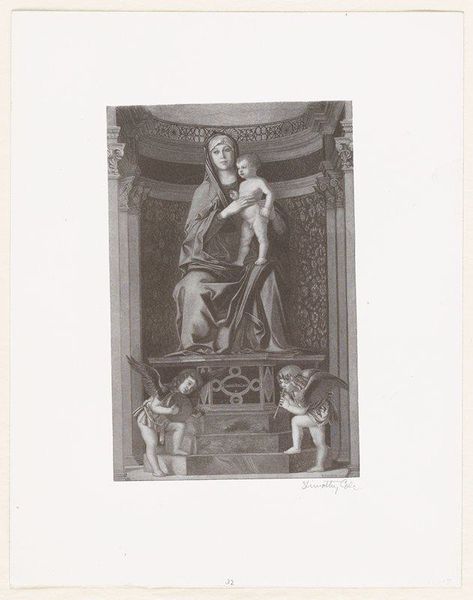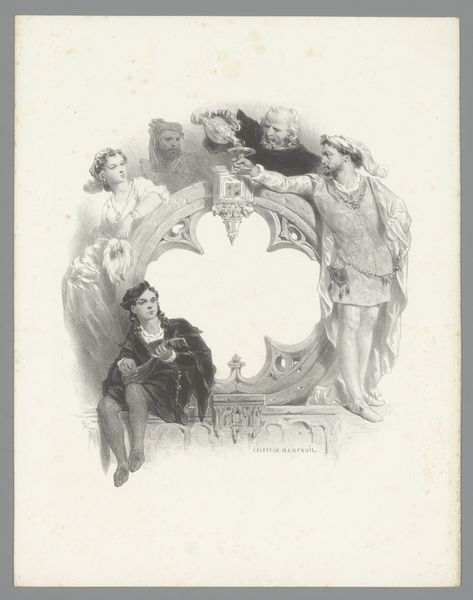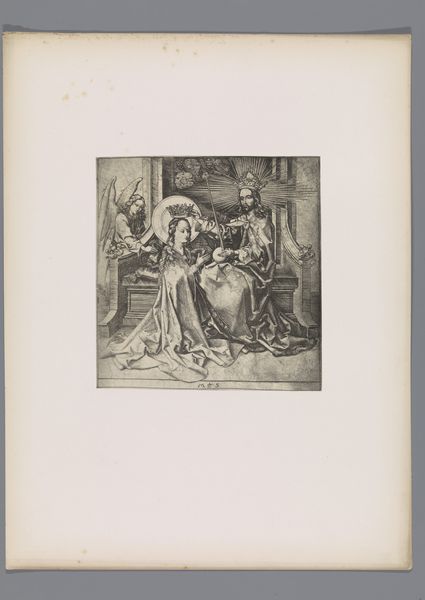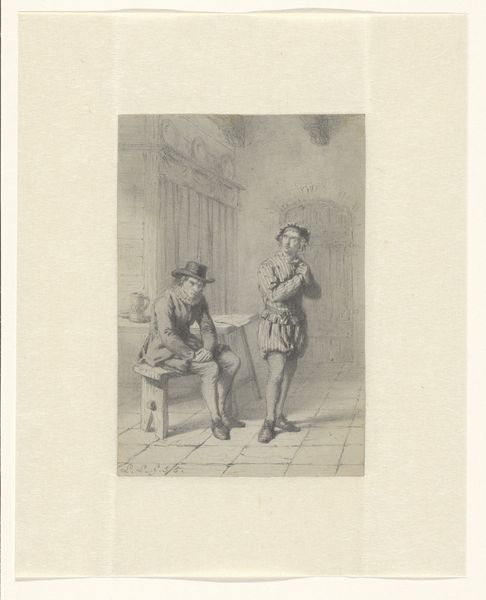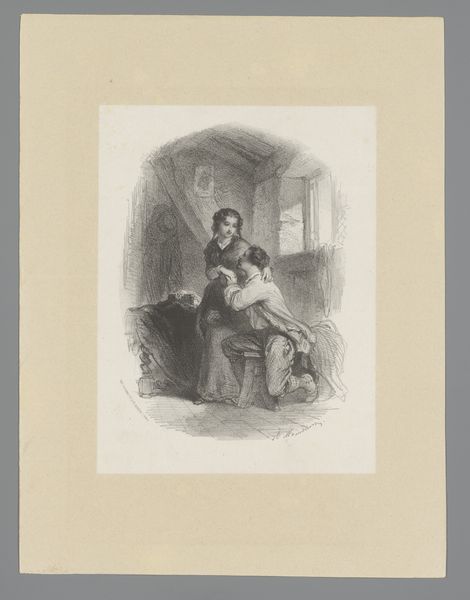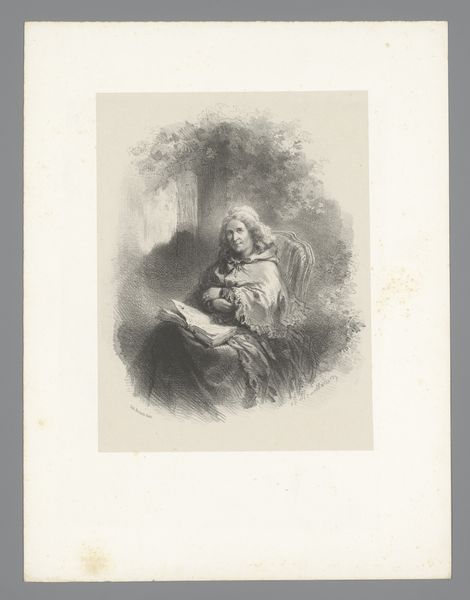
Jonge vrouw zittend op een monument voor Pierre-Jean de Béranger 1823 - 1873
0:00
0:00
drawing, print, engraving
#
portrait
#
drawing
#
statue
#
allegory
# print
#
figuration
#
romanticism
#
line
#
history-painting
#
engraving
Dimensions: height 359 mm, width 276 mm
Copyright: Rijks Museum: Open Domain
Curator: The lithograph before us is titled "Jonge vrouw zittend op een monument voor Pierre-Jean de Béranger", a work from Célestin Nanteuil, dating sometime between 1823 and 1873. It depicts a young woman reclining on what appears to be a monument. Editor: The image evokes a kind of quiet melancholia. The figure's posture, relaxed yet contained, speaks volumes about grief or contemplation. I wonder about the context that birthed it. Curator: Nanteuil's prints often show careful attention to detail. Look closely at the inscription and the texture of the stone; it’s really palpable despite being rendered in a print. One has to admire the level of detail achieved through lithography. Editor: Absolutely. It prompts questions around labor and production. Who was involved in the creation of the lithographic stone, the printing process, and what would the context for accessing this work have been like for various social strata? There's a certain romantic sensibility. The allegorical figure is perched upon a monument; but to whom? Curator: Indeed, it’s the monument of the poet Béranger. Think of it less about Béranger himself, but the machinery behind the prints for mass distribution—Nanteuil secured commissions due to his close friendships in literary and publishing circles in Paris. He became one of the illustrators for the printer François Chardon. Editor: Placing it within its broader social context emphasizes issues of cultural production. Béranger’s verses challenged the political status quo and spoke to the experience of everyday French citizens during the post-Revolutionary era. Consider the choice to represent him through this figure – what gendered narratives is Nanteuil mobilizing? What did Béranger represent to those commissioning and viewing this image? Curator: Interesting perspective, for me this particular example captures not only the subject matter but also reveals much about the art form itself – the craftsmanship and social circles behind its production. Editor: Agreed; these intersections expose wider cultural discourses around politics and memory in 19th-century France, revealing more than the immediate visual impression. Curator: Examining the means of production helps to unearth networks of patronage and printmakers like Nanteuil. Editor: Exactly, understanding these details helps expose the historical conditions that shaped its making.
Comments
No comments
Be the first to comment and join the conversation on the ultimate creative platform.
